[Work from Khalil Chishtee offers a taste of what it’s like to be split between two worlds. Alex reviews the show, placing Chishtee’s works in a global context. — the Artblog editors]
In today’s globalized world, it is almost impossible to be shielded from international influence and relations. But when you are an immigrant–a representative of both your birth nation and your current home–your dual identity makes you a bridge over barriers and a spokesperson against misconception. This is very true of Brooklyn-based artist Khalil Chishtee, who was born in Pakistan and whose current work, on display at Twelve Gates Gallery, supports his past; condemns the current state of affairs in Pakistan; and defends both of his homes for what they have given him and what they share.
Symbolizing defense
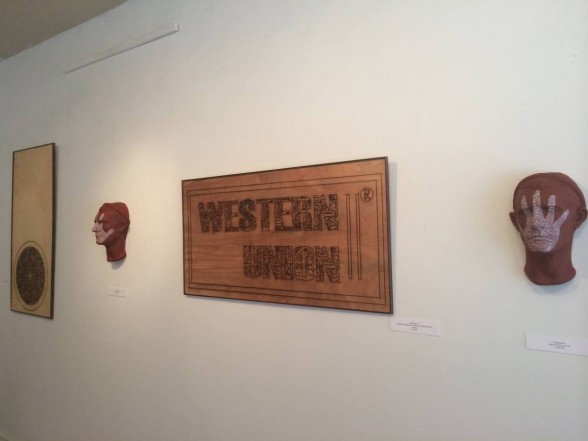
Chishtee’s main medium is laser-cut plywood, with handwritten Arabic calligraphy woven into complex forms scored into the surface of the wood; the positive and negative relief create truly fine and intricate forms, which radiate a gold hue in the shifting sunlight of the gallery. The use of light and shadow, with the natural and painted white wood, is pleasing to the eye, and emphasizes the beauty and lyrical nature of written Arabic even for those who do not understand it.
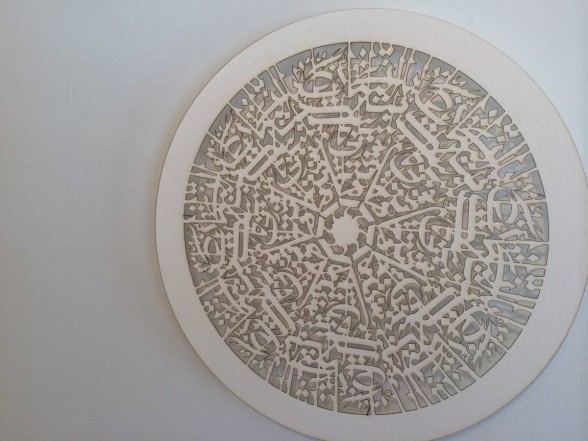
Contained in these formed texts are statements that discuss struggle and overcoming adversity, and offer a call for nonviolence and peace. In the work “Shield,” which appears on a natural plank and as a white negative reflection on the other side of the work “Western Union,” a portion from the Quran notes that to kill any man is to kill mankind. The shield speaks of defense–not only defending one’s culture against misconception, but alluding to Pakistan’s long history of war, brought about by things such as the power structures of religion; economy; and territorial disputes.
War is a theme of history
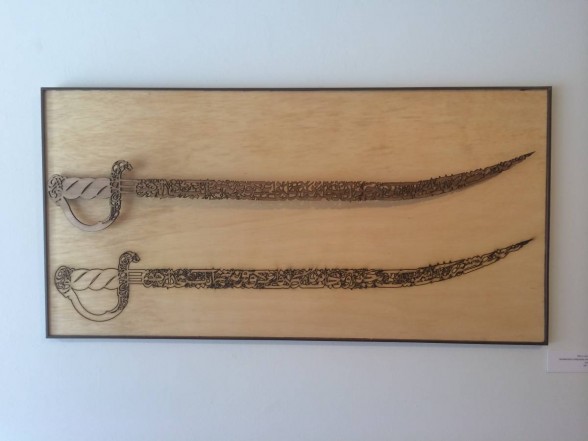
On the opposite wall, the artist displays a story of offense, using images of old-world swords and decorated horsemen to show not only an active voice, but to echo that war has been part of civilization for a long time–and while peace is the goal, war is a theme of history, regardless of where you are in the world. Two swords, titled “This is not my country,” and “This is not my religion,” present sentiments that the country Chishtee left is not the Pakistan of today. The honest stances in the titles are as sharp as the weapons he presents: weapons made of words.
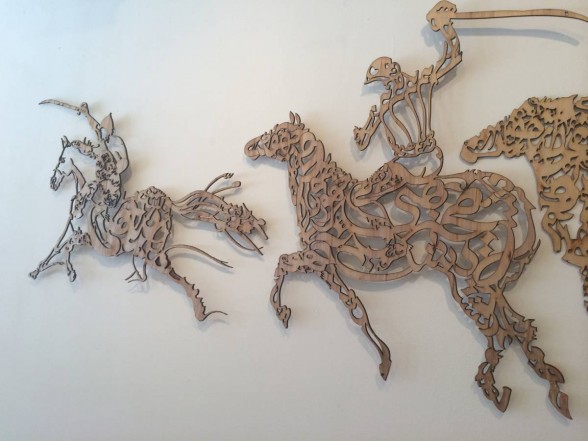
Between these works run the galloping horsemen of “History is a nightmare from which I am trying to awake,” again bluntly offering the ever-present theme of war both in the history of Pakistan, and in mankind’s history. The words of Pakistani philosopher and poet Sir Mohammad Iqbal ring out triumphantly in this piece, the artist alluding again to the turbulent past:
“Not only land we bore Your Word glorious across the heaving seas,
Upon our steed of zeal, we rode unto their darkest boundaries!”
– Shikwa, “The Complaint,” 1909
Defining allegiances
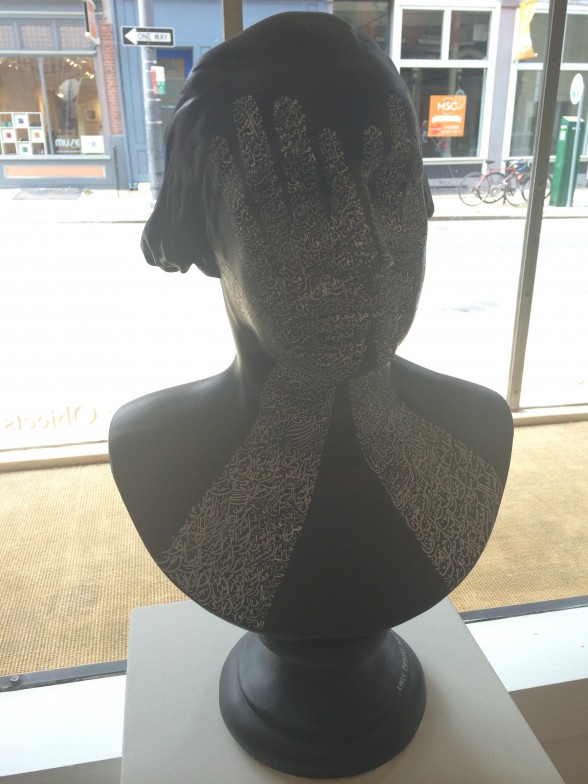
By the window of the gallery is perhaps one of the most humorous works in the show, also called “History is a nightmare from which I am trying to awake”. It is a hydrocal plaster bust of George Washington with Arabic script written in ink across his face in the shape of hands–giving the appearance that Washington is “facepalming” in response to the world today and the nation that he created. Chishtee’s presentation of the shame and denial of current affairs is embodied in this bust, his embarrassment and dismay paralleling Washington’s in this syncretic image.
Hydrocal plaster casts of classical faces “facepalming” like George Washington flank the prominent “Self Reliance” piece, which features the Western Union logo. “Explanation I” and “Explanation II” bear text that defends both Pakistan and the United States by lauding their good qualities. “Self Reliance” is the bridge that joins them, the Pop Art feel of the logo making a commentary on the presence of this money exchange, and emphasizing the importance of communication by sending money home to family members in addition to the standard written (or texted, or tweeted) word.
Chishtee first and foremost presents a body of work that shows a veneration of the past–both a Pakistani and American past–a denial of labels on each front; and a convergence of identities that creates not only a complex juxtaposition, but a conversation about the power structures that keep us from peace. In asserting your identity as a duality, where does your allegiance lie, and can you (or should you) be loyal to both? The work in this show demonstrates not only the technical skill of the artist and his diversity of media, but a unique perspective on the immigrant experience and a new declaration of the artist’s own independence.
I me and mine is on display at Twelve Gates Gallery (51 N. 2nd Street, Philadelphia, PA 19106) until Sept. 28, 2014.









